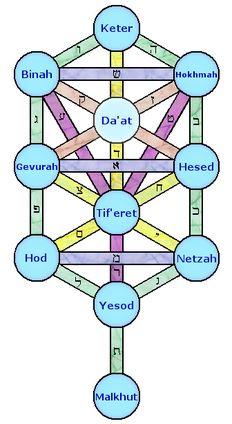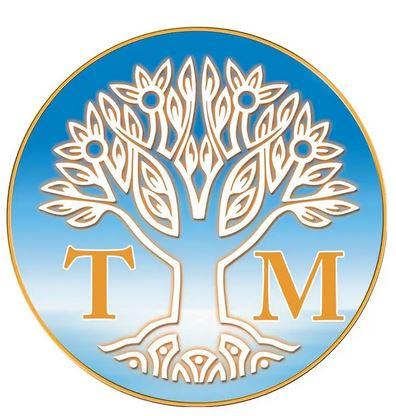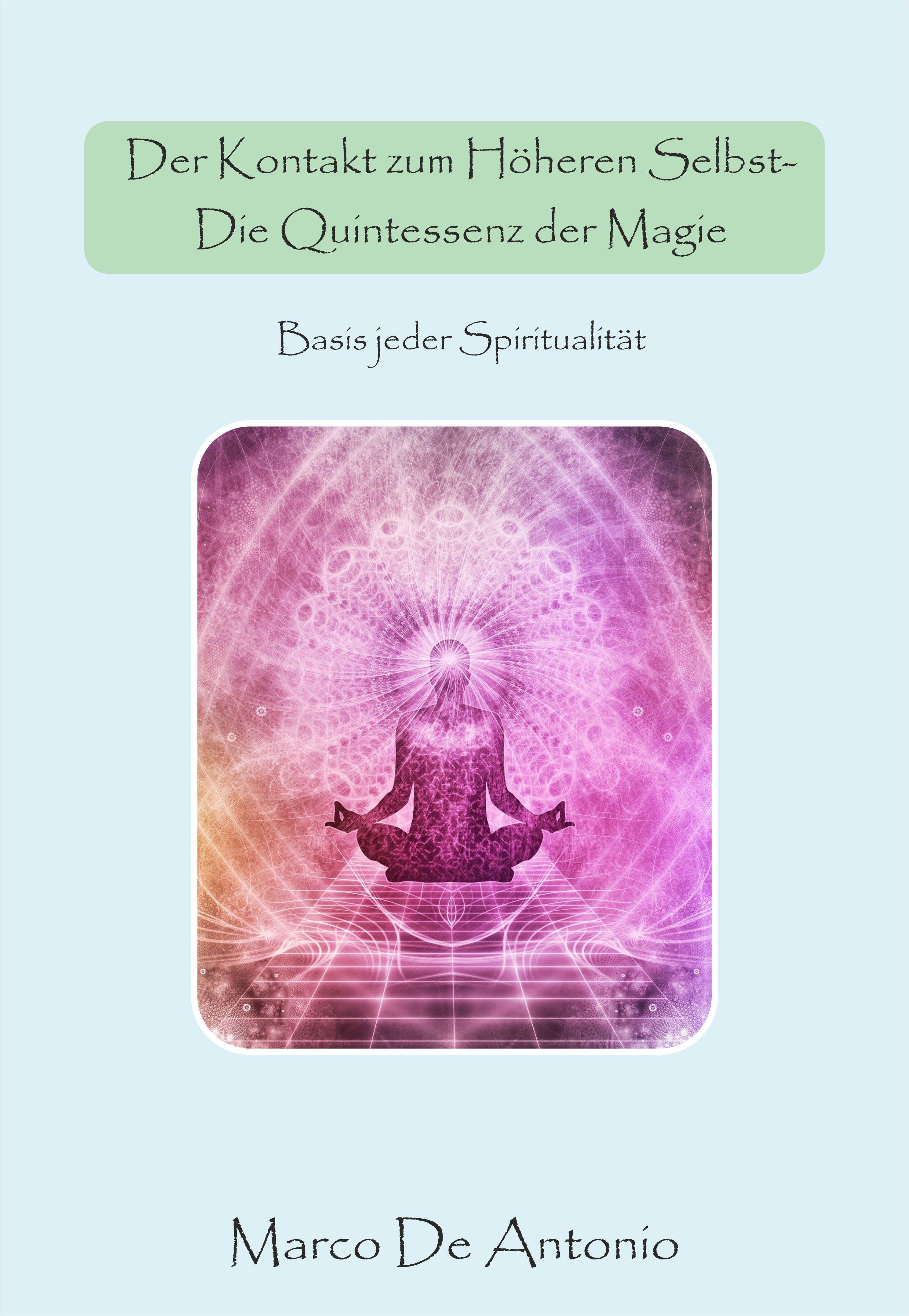Transzendentale Meditation: A Path to Inner Peace
In today's fast-paced world, finding inner peace is more challenging than ever. Transcendental Meditation (TM) offers a powerful technique to achieve this serenity. By practicing TM, individuals can embark on a journey of self-discovery, leading to a more balanced and fulfilling life.

TM is a simple, yet effective method that promotes relaxation, reduces stress, and enhances mental clarity. As people explore the depths of their consciousness through TM, they often experience a profound sense of calm and well-being.
Key Takeaways
- Discover the benefits of Transcendental Meditation for inner peace.
- Learn how TM can lead to a journey of self-discovery.
- Understand the simplicity and effectiveness of the TM technique.
- Explore how TM can reduce stress and enhance mental clarity.
- Find out how TM promotes overall well-being.
What is Transzendentale Meditation?
At its core, Transcendental Meditation is a technique designed to help individuals experience a deeper state of consciousness and inner peace. This meditation practice is distinct from other forms of meditation due to its specific method and benefits.
The Core Principles of TM
Transcendental Meditation is based on the principle of using a mantra to help the mind settle into a state of calm awareness. This practice is designed to be effortless, allowing the practitioner to experience a deeper state of consciousness without concentration or control.
The Effortless Nature of the Practice
The effortless nature of TM is one of its key benefits. Unlike some meditation practices that require focus or control, TM allows the mind to naturally settle into a state of restful awareness. This makes it accessible to individuals of all ages and backgrounds.
TM vs. Other Meditation Techniques
While various meditation techniques share the goal of promoting mental clarity and relaxation, TM has distinct differences. Notably, its use of a mantra and the technique's effortless nature set it apart.
Key Differences from Mindfulness Meditation
Mindfulness meditation involves paying attention to the present moment, often through focus on the breath or body sensations. In contrast, TM uses a mantra to transcend the active thinking process, aiming for a deeper state of consciousness. This difference in approach can make TM more appealing to those seeking a less controlled meditation experience.
Understanding these differences can help individuals choose the meditation practice that best suits their needs and preferences. Whether seeking relaxation, mental clarity, or spiritual growth, TM offers a unique approach that has attracted practitioners worldwide.
The Origins and History of Transcendental Meditation
Rooted in the ancient wisdom of Vedic traditions, Transcendental Meditation has evolved over time under the guidance of Maharishi Mahesh Yogi. This meditation technique, now known globally as TM, has a rich history that spans decades, influencing spiritual growth and well-being.
Maharishi Mahesh Yogi's Journey
Maharishi Mahesh Yogi's spiritual journey began in India, where he studied under the renowned guru, Swami Brahmananda Saraswati. This period of study laid the foundation for Maharishi's understanding of the Vedic traditions and their application in modern life.
From Vedic Traditions to Modern Practice
The Vedic traditions, ancient and rich in spiritual knowledge, were adapted by Maharishi into a simple, accessible meditation technique. This adaptation made the profound benefits of Vedic wisdom available to a global audience.
The Global Spread of TM
Transcendental Meditation gained popularity worldwide in the 1960s and 1970s, attracting practitioners from various walks of life. The technique's simplicity and effectiveness contributed to its global spread.
Celebrity Practitioners and Their Influence
The adoption of TM by celebrities such as The Beatles, Mia Farrow, and Clint Eastwood further catapulted the technique into the global spotlight. Their endorsement helped demystify meditation and encouraged a broader audience to explore TM.
| Year | Event | Significance |
|---|---|---|
| 1950s | Maharishi Mahesh Yogi begins teaching TM | Foundation of TM as a global movement |
| 1960s | TM gains popularity in the West | Increased global awareness and practice |
| 1970s | Celebrity endorsements | Mainstream recognition and wider adoption |
The history of Transcendental Meditation is a testament to the power of ancient wisdom adapted for modern life. Through its global spread and the influence of various practitioners, TM continues to promote spiritual growth and inner peace.
The Science Behind Transzendentale Meditation
Transcendental Meditation is not just a technique for relaxation; it's a gateway to a deeper understanding of the self and its impact on our well-being. By exploring the science behind TM, we can gain insights into how it affects our brain and body, leading to improved mental clarity and stress relief.
Research Studies and Clinical Findings
Numerous studies have investigated the effects of TM on both psychological and physiological levels. Research has shown that regular practice of TM can lead to significant reductions in stress and anxiety, improvements in cognitive functioning, and even changes in brain wave patterns.
Brain Wave Patterns During TM
One of the key areas of research has been on the brain wave patterns during TM. Studies have found that TM is associated with an increase in alpha and theta brain waves, which are indicative of a state of deep relaxation and heightened awareness. This state is believed to be conducive to mental clarity and stress relief.
Physiological Changes During and After Practice
TM also induces various physiological changes that contribute to its benefits as a relaxation technique. These changes include decreased blood pressure, reduced cortisol levels (indicating lower stress), and improved heart rate variability.
The Relaxation Response
The concept of the "relaxation response" was first introduced by Dr. Herbert Benson, describing the body's natural response to relaxation, which counters the effects of stress. TM is recognized as one of the most effective methods for eliciting this response, promoting a state of deep relaxation and reducing the body's stress response.
| Physiological Parameter | Change During TM | Benefit |
|---|---|---|
| Blood Pressure | Decreases | Reduces risk of heart disease |
| Cortisol Levels | Decreases | Reduces stress |
| Heart Rate Variability | Improves | Enhances cardiovascular health |
By understanding the science behind TM, we can appreciate its potential as a powerful tool for achieving mental clarity, stress relief, and overall well-being.
How to Practice Transcendental Meditation
Transcendental Meditation is a simple, yet powerful technique that can be practiced by anyone to achieve a state of deep relaxation and inner peace. This meditation technique, once learned, can be practiced anywhere, at any time, making it a versatile tool for managing stress and enhancing overall well-being.
The Basic Technique Step by Step
The practice of TM involves a specific technique that is taught by certified instructors. The basic steps include:
- Finding a quiet and comfortable place to sit
- Closing your eyes and beginning to meditate using a mantra
- Practicing for 15-20 minutes, twice a day
Proper Posture and Breathing
Maintaining a comfortable posture is crucial during TM. Sit in a relaxed position with your back straight, and let your breathing become natural. Avoid forcing your breath; instead, allow it to settle into a gentle rhythm.
The Importance of Mantras in TM
In TM, a mantra is used to help the mind settle to a quieter state. The mantra is a sound or word that is repeated silently to oneself.
How Mantras Work to Quiet the Mind
The mantra serves as a tool to gently guide the mind away from active thought and toward a state of inner calm. By focusing on the mantra, one can transcend the surface level of thinking and experience a deeper state of consciousness.

Creating Your Ideal Meditation Space
While TM can be practiced anywhere, creating a dedicated meditation space can enhance your practice. Consider a quiet, clean, and comfortable area.
Environmental Factors for Successful Practice
| Factor | Description | Benefit |
|---|---|---|
| Quietness | Avoid noisy areas | Reduces distractions |
| Comfort | Use a cushion or chair | Enhances relaxation |
| Cleanliness | Keep the area tidy | Promotes a sense of calm |
By following these guidelines and incorporating TM into your daily routine, you can experience the profound benefits of this relaxation technique, leading to a more balanced and fulfilling life.
Mental Health Benefits of TM
Transcendental Meditation has been widely recognized for its profound impact on mental health, offering a range of benefits that can transform lives. The practice is not just a technique for relaxation but a comprehensive approach to achieving mental well-being.
Stress Reduction and Anxiety Management
One of the most significant benefits of TM is its ability to reduce stress and manage anxiety. By practicing TM, individuals can lower their cortisol levels, leading to a decrease in stress response.
Cortisol Levels and Stress Response
Research has shown that regular TM practice can lead to a significant reduction in cortisol levels, thereby mitigating the body's stress response. This is crucial in today's fast-paced world, where chronic stress can lead to a variety of mental health issues.
Improving Focus and Mental Clarity
TM also plays a vital role in improving focus and mental clarity. By enhancing cognitive function, TM enables individuals to tackle complex tasks with greater ease and efficiency.
Enhanced Cognitive Function
Studies have demonstrated that TM can lead to enhanced cognitive function, including improved memory, problem-solving skills, and concentration. This makes TM an invaluable tool for individuals looking to boost their mental performance.
TM for Depression and Emotional Balance
Furthermore, TM has been found to be beneficial for individuals dealing with depression and seeking emotional balance. The practice helps in cultivating a positive outlook and reducing symptoms of depression.
Personal Stories of Transformation
Many individuals have reported significant improvements in their mental health after incorporating TM into their daily routine. These personal stories of transformation underscore the potential of TM to positively impact lives.
| Mental Health Benefit | Description | Impact |
|---|---|---|
| Stress Reduction | Lower cortisol levels | Reduced anxiety |
| Improved Focus | Enhanced cognitive function | Better mental clarity |
| Emotional Balance | Reduced symptoms of depression | Greater emotional stability |
Physical Health Improvements Through Regular Practice
Regular practice of Transcendental Meditation has been shown to have a positive impact on various aspects of physical health. By incorporating TM into their daily routine, individuals can experience significant improvements in their overall well-being.
Impact on Blood Pressure and Heart Health
TM has been found to have a beneficial effect on blood pressure and heart health. Studies have shown that regular practice can lead to lower blood pressure and reduced risk of heart disease.
Cardiovascular Research Findings
Research on the cardiovascular benefits of TM has yielded promising results. A study published in the Journal of Alternative and Complementary Medicine found that TM practice was associated with reduced blood pressure and cardiovascular risk factors.
| Health Indicator | Pre-TM Practice | Post-TM Practice |
|---|---|---|
| Blood Pressure | High | Lower |
| Heart Rate | Elevated | Normalized |
| Cardiovascular Risk | High | Reduced |
Sleep Quality Enhancement
TM can also contribute to improved sleep quality. By reducing stress and promoting relaxation, TM helps individuals achieve a more restful and rejuvenating sleep.
Breaking the Cycle of Insomnia
For those struggling with insomnia, TM offers a potential solution. By calming the mind and body, TM can help break the cycle of sleeplessness and promote a healthier sleep pattern.
Pain Management and Immune Function
Furthermore, TM has been linked to improved pain management and immune function. The practice is believed to enhance the body's natural healing processes, leading to better overall health.
The Mind-Body Connection in Healing
The mind-body connection plays a crucial role in healing and recovery. TM, by promoting a state of deep relaxation and inner peace, supports this connection, potentially leading to improved health outcomes.
By practicing Transcendental Meditation, individuals can embark on a journey of self-discovery and improved physical health, cultivating a deeper sense of inner peace and well-being.
Spiritual Growth and Self-Discovery Through TM
Transcendental Meditation (TM) is a powerful tool for spiritual growth and self-discovery, helping individuals connect with their inner selves on a deeper level. As practitioners embark on this journey, they often report a significant shift in their perception and understanding of themselves and the world around them.
Connecting with Your Inner Self
TM facilitates a deeper connection with one's inner self by promoting a state of relaxed awareness. This allows individuals to transcend the surface level of their consciousness and explore their inner depths.
Transcending Everyday Consciousness
By transcending everyday consciousness, practitioners can experience a broader perspective on life, unencumbered by the stresses and distractions of daily routines. As Maharishi Mahesh Yogi once said, "The ultimate goal of life is to realize the transcendental reality, the absolute consciousness, which is beyond the limits of the mind."
"The ultimate goal of life is to realize the transcendental reality, the absolute consciousness, which is beyond the limits of the mind."
The Journey of Self-Awareness
The practice of TM is a journey into the depths of one's own awareness. It fosters a greater understanding of oneself, including one's values, goals, and aspirations.
Discovering Your True Nature
As individuals progress on this journey, they begin to uncover their true nature, moving beyond the superficial layers of their personality to discover their authentic selves. This process of self-discovery is fundamental to spiritual growth and personal fulfillment.
TM as a Path to Higher Consciousness
TM is not just a technique for relaxation; it's a gateway to higher states of consciousness. Regular practice can lead to a more profound understanding of the self and the universe.
Beyond Relaxation: Spiritual Dimensions
The spiritual dimensions of TM extend beyond the benefits of relaxation, offering a rich terrain for personal and spiritual growth. Practitioners often report experiencing a sense of unity and interconnectedness with all existence.
By integrating TM into their daily lives, individuals can experience a transformative journey of spiritual growth and self-discovery, leading to a more meaningful and fulfilling existence.
Integrating Transzendentale Meditation into Daily Life
Integrating Transcendental Meditation into your daily routine can be a transformative experience. By making TM a consistent part of your daily life, you can experience profound benefits that enhance your overall well-being.
Creating a Sustainable Practice Schedule
To establish a consistent TM practice, it's crucial to create a schedule that works for you. Consider your daily routine and identify the best times for meditation.
Morning vs. Evening Meditation
Both morning and evening meditation have their benefits. Meditating in the morning can help set a positive tone for the day, while evening meditation can aid in relaxation and prepare your body for restful sleep.
Combining TM with Other Wellness Practices
TM can be effectively combined with other wellness practices to enhance its benefits. Consider integrating TM with yoga, nutrition planning, and other holistic health practices.
Yoga, Nutrition, and Holistic Health
Combining TM with yoga can improve flexibility and balance, while a balanced nutrition plan can support mental clarity and overall health. Holistic health practices, including TM, can lead to a more balanced and fulfilling life.
Measuring Progress in Your Meditation Journey
Tracking your progress in TM can help you stay motivated and committed to your practice. Look for subtle signs of transformation, such as increased calmness and improved focus.
Subtle Signs of Transformation
As you continue with TM, you may notice subtle yet significant changes in your daily life, including improved emotional balance and a greater sense of inner peace.

Embracing Inner Peace Through Transcendental Meditation
Transcendental meditation (TM) offers a powerful path to achieving inner peace in today's fast-paced world. By understanding the principles and benefits of TM, individuals can embark on a journey of personal transformation and spiritual growth.
Practicing TM regularly can lead to reduced stress, improved mental clarity, and enhanced overall well-being. As discussed, the technique involves the use of a mantra to quiet the mind and access a deeper state of consciousness.
By incorporating TM into daily life, individuals can experience profound positive changes, from improved emotional balance to increased self-awareness. The practice has been shown to have a positive impact on both mental and physical health, making it an attractive option for those seeking a holistic approach to wellness.
As you consider starting your TM journey, remember that consistency and patience are key. With regular practice, you can unlock the full potential of TM and move closer to achieving inner peace.
FAQ
What is Transcendental Meditation?
Transcendental Meditation is a specific form of mantra-based meditation that aims to promote a state of relaxed awareness, or consciousness, allowing the mind to experience a deeper state of inner peace and calm.
How is Transcendental Meditation different from Mindfulness Meditation?
While both practices are forms of meditation, Transcendental Meditation involves the use of a mantra to quiet the mind, whereas Mindfulness Meditation focuses on being present in the moment, often through the observation of breath or body sensations.
What are the benefits of practicing Transcendental Meditation?
The benefits of practicing Transcendental Meditation include reduced stress and anxiety, improved mental clarity and focus, enhanced creativity, and a greater sense of inner peace and well-being, as well as potential physical health benefits such as lower blood pressure.
How do I practice Transcendental Meditation?
To practice Transcendental Meditation, find a quiet and comfortable space, close your eyes, and begin to repeat your mantra to yourself, allowing your mind to settle into a state of relaxed awareness, typically for 15-20 minutes, twice a day.
What is the role of a mantra in Transcendental Meditation?
In Transcendental Meditation, a mantra is a word or sound that is repeated to help quiet the mind and access a deeper state of consciousness, allowing for a more profound experience of inner peace and relaxation.
Can Transcendental Meditation help with stress relief and anxiety management?
Yes, Transcendental Meditation has been shown to be effective in reducing stress and anxiety by promoting a state of relaxation and reducing cortisol levels, helping to manage anxiety and promote overall well-being.
Is Transcendental Meditation a religious practice?
No, Transcendental Meditation is not a religious practice, but rather a technique for promoting mental and physical well-being, and can be practiced by individuals of any faith or background.
How long does it take to experience the benefits of Transcendental Meditation?
The benefits of Transcendental Meditation can be experienced in as little as a few weeks, with regular practice, although individual results may vary, and consistent practice is recommended for optimal benefits.
Can I learn Transcendental Meditation on my own, or do I need a teacher?
While it is possible to learn about Transcendental Meditation through self-study, the technique is typically taught by a certified teacher who can provide personalized instruction and guidance, helping to ensure a proper understanding and practice of the technique.








